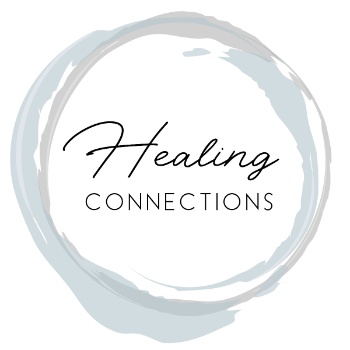PhotoTherapy & Therapeutic Photography
Unlocking Healing Perspectives: Photography as a Therapeutic Too
In the modern age, the art of photography has transcended its role as a mere visual record. It has emerged as a powerful tool that offers profound therapeutic benefits to individuals seeking healing, self-expression, and personal growth.
Capturing the Inner World: Photography as therapy encourages individuals to express their inner thoughts, emotions, and experiences through the lens of a camera. By focusing on imagery that resonates with their feelings or experiences, individuals gain a unique opportunity to externalize their inner world. This process can provide a sense of distance from emotional turmoil and pave the way for greater self-awareness.
A Visual Dialogue: Photography becomes a mode of communication without words—a visual dialogue between the individual, their emotions, and the world around them. This mode of expression can be particularly beneficial for those who find it challenging to articulate their feelings verbally. Through carefully composed images, individuals can communicate their struggles, hopes, and aspirations in a language that is uniquely their own.
Gaining New Perspectives: The act of framing and capturing a photograph prompts individuals to consider the world from different angles—both metaphorically and literally. In therapy, this shift in perspective can symbolize the possibility of viewing personal challenges and experiences through a fresh lens. By exploring multiple viewpoints, individuals can gain insights and find hidden meaning within their experiences.
Healing Through Creation: The process of selecting subjects, composing shots, and editing images allows for a sense of agency and creative expression. This act of creation can be empowering, enabling individuals to shape their narratives and explore aspects of their identity. As individuals transform their thoughts and feelings into tangible images, they embark on a journey of self-discovery and empowerment.
Cultivating Mindfulness: Photography as therapy encourages individuals to be present in the moment as they seek out scenes, patterns, and details to capture. This mindfulness practice fosters a deeper connection with one's surroundings and an increased awareness of sensory experiences. Engaging with the present moment can be particularly soothing for those struggling with anxiety or stress.
Facilitating Conversations: Photographs often serve as catalysts for conversations in therapy sessions. A single image can encapsulate a complex emotion or experience, leading to fruitful discussions between the individual and their therapist. Through these conversations, individuals can explore their feelings, narratives, and perspectives in a supportive and nonjudgmental environment.
Integrating photography into therapeutic practice involves a collaborative process between the individual and their therapist. Together, they select images, reflect on their meaning, and explore the emotions they evoke. This collaborative journey can provide individuals with a sense of validation and connection, fostering a deeper therapeutic alliance.

PhotoTherapy
PhotoTherapy is the use of photography in psychotherapy sessions as a tool to help clients achieve their therapeutic goals. Photography can be used with individuals, couples, and families. It’s beneficial for people struggling with self-esteem, body image, grief, life transitions, attachment trauma, and more. There are several techniques of phototherapy that can be employed through a client’s therapeutic journey to accelerate progress and achieve treatment goals.
PhotoTherapy can help you work through:
- Grief
- Big life changes
- Self-esteem
- Attachment issues
- Family of origin issues
- Romantic relationship issues
- Gaining emotional intelligence
- Breakups

Therapeutic Photography
Therapeutic Photography is the use of photography as therapy itself. Therapeutic photography is most effective when delivered by a mental health professional, however, others trained can do so as well. There aren’t other techniques, methods, or theoretical frameworks used outside of photography. Therapeutic photography can be facilitated one-on-one or in group settings. Therapeutic Photography is ideal for people interested in self-explorational and personal growth. Think of therapeutic photography as a personal development program or a coaching experience that involves photographs.
Therapeutic Photography can help you work through:
- Self-love
- Personal development
- Self-exploration
- Leadership building
- Team cohesiveness
- Conflict-resolution

My Story With Photography
At the age of 9, I was gifted my first film camera. I took photos of everything and quickly ran out of film. I had to wait until my mom could take me to the drugstore to drop off the roll. I loved filling out the envelope where the rolls were placed. In college, I bought my first DSLR camera and started exploring a little more with lighting, posing, and editing. At the time, I made extra cash on weekends assisting a wedding photographer. Eventually, I gained a bit more confidence and take photos for friends and acquaintances.
In graduate school, in my counseling techniques class, we were asked to do a project on an innovative out-of-the-box technique we could use in therapy. You guessed correctly, I chose photography. I remember that I wished I knew of a training I could take that would actually teach me how to integrate photography into my work with clients. At that time, I found nothing.
Life got hectic after graduate school, and I let go of photography.
A few weeks into 2022, going through my notifications I "bumped into" the IG of a PhotoTherapy trainer. Pure coincidence, and I knew I had to get trained. Two of my goals for 2022, were to lean in more to my creative side and take a training that would help widen my clinical skills. PhotoTherapy checked all the boxes.
I dusted off my DSLR and signed up.
From day one of the training, I fell in love with how flexible and adaptable PhotoTherapy is.
I'm excited to bring together two of my passions, photography and therapy, in a way that can better help my clients heal and thrive.




